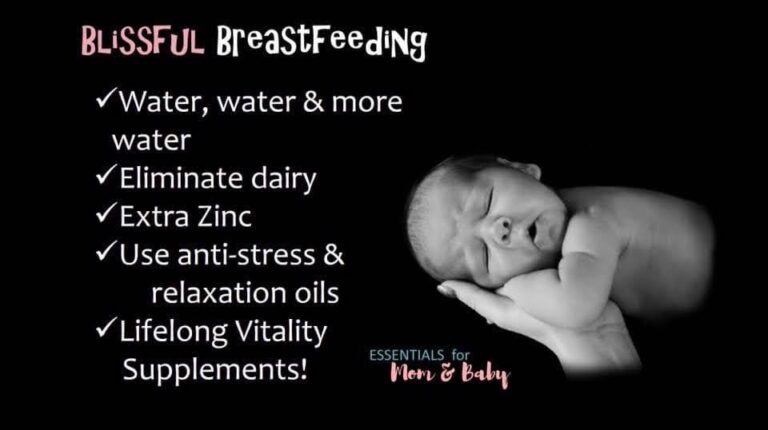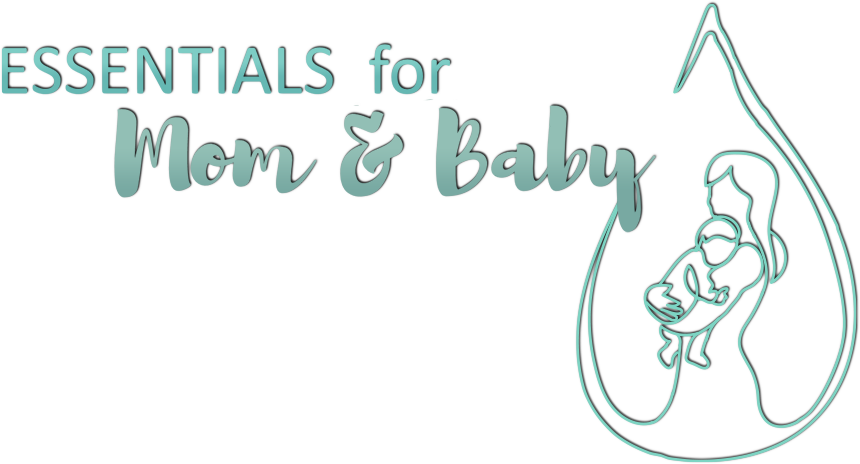
Breastfeeding is perfectly designed by a loving God to empower mothers to care for their babies. Now that doesn’t mean that it’s always easy or painless, but the benefits of breastfeeding to both mother and baby are endless.
Breastfeeding helps us to bond with our babies in a way no one else can. Only you can provide your baby with that rich quality of nourishment and love. The close relationship you build can carry you through teenage years and last a lifetime.
I have successfully breastfed five babies and helped many mothers enjoy this opportunity to bond with their babies as well. It’s an honor to share with you answers to the most common questions we get asked and hope our advice and solutions will set you up for success.
Question #1: How do I get started?
During pregnancy learn all you can. Knowledge is power. In the last few weeks of pregnancy, your body will start to produce colostrum. It is easy for your newborn to digest and it has a very high concentration of nutrition. It is high in carbohydrates and protein, but low in fat. Colostrum will line your baby’s digestive tract with good bacteria. This is especially true if you’ve been taking a probiotic defense formula giving you good bacteria and good flora as well. Colostrum is also exceptionally high in antibodies giving your baby an immediate defense against germs. Colostrum is a natural laxative that helps eliminate meconium (poop that looks like black tar), undigested debris from the amniotic fluid in the baby’s digestive tract, and excess bilirubin which will improve your baby’s skin color.
Question #2: How do I position my baby?
Proper positioning of your baby is of most importance to ensure he doesn’t take in air and doesn’t make you sore. It may be a little awkward at first but you’ll get the hang of it. Keep your baby in a straight line with his belly connecting with your belly. You don’t want his head facing one way and his feet another. Keep his neck straight. To see what I mean, turn your head and swallow. Can you feel how uncomfortable it is? Be sure he doesn’t have to turn his head. You may gently put pressure on your baby’s chin to get him to open his mouth so as to take in as much of the areola as possible. This also works well if your son is crying. As soon as his mouth is open wide insert as much of your breast as possible.

Question #3: When will my milk come in?
The amount of milk you produce is in direct correlation to how often you nurse. So the more you breastfeed the sooner your milk will come in. Usually this will take about two to four days. You’ll know it when your breasts feel firmer and your baby will start taking big gulps. There are a few things you can do to quickly bring in your milk. First, adequate rest is a must but nearly impossible with a newborn. Get help. You need sleep. Second, hydration. Drink as much water as you can, ideally 3 or 4 quarts per day. Third, the best nutrition possible. Intake foods that are high in nutritional value and keep yourself full. You burn more calories while nursing than you did when pregnant. It can be helpful to have a basket of healthy snacks nearby so you can easily grab something to eat while you’re nursing. Eat up!
Sometimes I hear mothers express concerns that their baby might be going hungry while waiting for their milk to come in. When your infant is born his stomach is the size of a marble. After a week it’s the size of a ping-pong ball. So your baby really doesn’t need that much to eat, however in some cases a little formula may settle your baby for the time being. Remember to nurse your baby as often as he wants.
Question #4: What can I do when I feel engorged?
We can be so excited when our milk comes in only to find it very uncomfortable, even downright painful. You’ve heard the saying, “when mamma ain’t happy ain’t nobody happy” so let’s do something about that pain. Gently hand express enough milk to relieve pressure. A warm shower is the perfect place for this and the steamy heat can do wonders for the pain. Remember it’s supply and demand so you don’t want to express too much milk with an automatic breast pump. The Haakaa manual breast pump can help you release the perfect amount of pressure.
Peppermint essential oil may decrease your milk supply. This is especially beneficial during times of engorgement or when you’ve finished nursing. Each body is different, but typically applying one drop topically to each breast while avoiding the nipple or taking 2 drops internally with a clear veggie capsule should do it. You can also add the peppermint to warm tea.
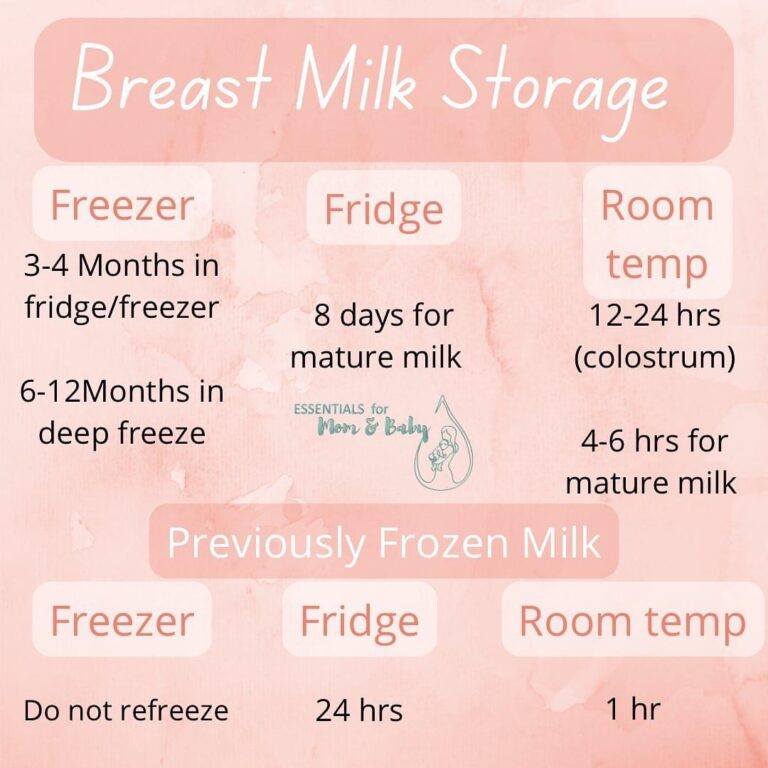
Give yourself time. Within the near future your body will regulate the amount of milk your baby needs.
Question #5: What can I do to increase my milk supply?
During a growth spurt or at other times you may need to increase your milk supply. There are many things you can do starting with the same remedies to get your milk to come in. Adequate rest is crucial. Complete hydration is a must. Try to get at least 3-4 quarts of water per day. Nutrition is key. During pregnancy your body gives all the nutrients to your baby and you get the leftovers. While nursing, you get all the nutrients and he gets the leftovers. You need to consume an extra 500 calories per day for nice, rich milk full of nutrients instead of “skim milk”. This is not the time to go on a diet, cut calories or curb your appetite. Lifelong Vitality Supplements are easily digested and will supply you with the perfect amount of needed nutrients. Zinc is included in the supplements but taking extra zinc can be helpful in increasing milk supply. Low levels of essential fatty acids may decrease or inhibit your milk supply. If needed, you can also add extra omegas.

Essential oils can be a wonderful solution to increase milk supply. Apply fennel topically all over the breast, avoiding the nipple, 3-4 times a day. There is no need to wash it off. You may also use fennel internally by taking 2-3 drops in a clear veggie capsule or under your tongue and chase it with water 3-4 times a day.
I must note that not all essential oils are created equally, and that a company can legally label their oils as 100% pure even if there is only 10% of the actual oil in it and the rest is synthetic. To ensure a company’s honesty and purity in their sourcing practices you should be able to publicly see their third party test results.
Basil and clary sage are two other essential oils that may increase your milk supply. They are used in the same manner as fennel. Remember to nurse as often as you can.
I was recently reading in The Doula Advantage about a study that was conducted involving breastfeeding. It reported that women who were NOT supported by a doula while giving birth were 4 times more likely to report problems with breastfeeding and 3 times as likely to be feeding their infants food other than breast milk at six weeks of age. It’s important to note these doulas only provided support during labor and nothing during postpartum.
Interestingly, 32 percent of the mothers who were not supported by a doula blamed lack of milk supply, compared to 13 percent of the doula-supported mothers. Then it posed this question, “Is it possible that the mothers who were supported by a doula viewed their bodies as strong and capable, while the mothers who were not supported considered their bodies as deficient?”
Please know that if you have tried all these things and you just aren’t producing enough milk to fully sustain your baby, that is okay. You are not broken. Continue to breastfeed as much as you can and supplement with formula as needed. You are doing an amazing job mama! A fed baby is a happy, healthy baby.
Question #6: How do I keep from getting and also care for sore nipples?
To ensure healthy nipples I’ve found that nothing works better than Correct-X. It contains essential oils known to promote healing of the skin such as frankincense, helichrysum, tea tree, cedarwood and lavender. Correct-X will soothe, hydrate, provide a moisture barrier, absorb quickly, and be gentle on your tender skin. Apply it after nursing every time as preventative. There is no need to wipe it off prior to nursing.
Assuming your nipples are already cracked, blistered, or bleeding, you can apply myrrh, geranium or sandalwood essential oils directly or dilute, right after nursing. There’s no need to wash it off. Then layer Correct-X on top.
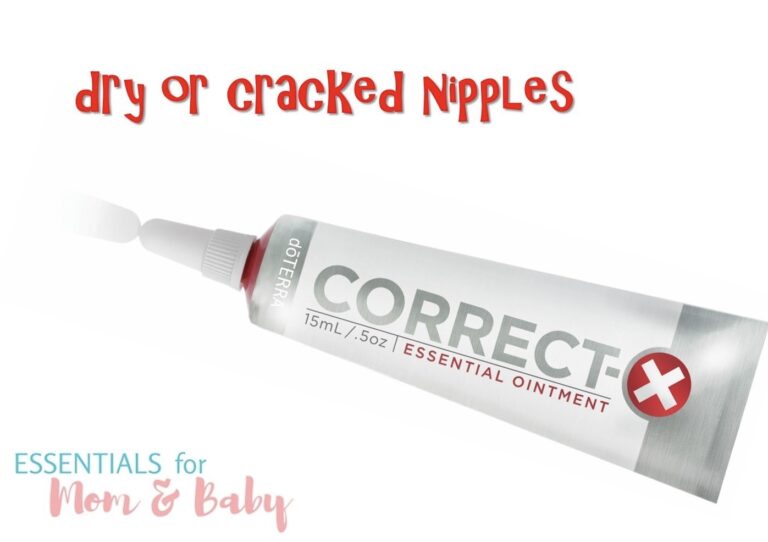
If Correct-X is not available another alternative I recommend is Lanolin Nipple Cream from Lansinoh. Be diligent in application of either product even when your nipples don’t hurt until a few months have passed and your skin has had time to adjust.
Question #7: How do I relax to get my milk to release?
When your baby is hangry (so hungry he’s angry) and you’re in a rush, it can sometimes be hard to relax enough to have your milk “let down”. Take a deep breath and collect yourself. You may find there are things that can help you to relax such as a dark, quiet room, peaceful music, or essential oils. Some of my favorites are: lavender, wild orange, and Adaptiv. Adaptiv is doTERRA’s calming blend specifically designed with a stressed-out mother in mind. It works wonders!
Question #8: I’ve got a clogged milk duct. Now what?
Eliminating dairy products may help you avoid clogged ducts. Also, try not to use wire bras or anything that may interfere with proper circulation of your breast milk. If you notice a hard lump on your breast that may turn pinkish and tender it could be a clogged milk duct. Gently massage your breast in a downward motion toward the nipple. Heat and moisture are wonderful tools to help break up the lump. This is most easily done when a warm washcloth is applied for several minutes prior to breastfeeding. Nursing your baby in different positions may help while you gently massage the clogged area. Nursing your baby while he’s laying down with you on your hands and knees so your breast hangs down may also help. Gravity is then in your favor. Empty the breast with the clogged duct as much as possible. Offer it first to your baby before nursing on the other side.
Also, any foods that will boost your immunity are ideal such as fresh pineapple juice, elderberries, oranges, kale, spinach, and tomatoes.
Question #9: Help! Mastitis??
A clogged milk duct can quickly change into mastitis. You’ll know if you develop a fever, body aches, and chills. From La Leche League International comes a book I highly recommend. It’s called, “The Womanly Art of Breastfeeding” and the following paragraph is one I selected from it. “The basics for mastitis treatment are simple: Empty Breast, Lots of Rest. Lots of rest means don’t stand if you can sit, don’t sit if you can lie down, don’t try to stay awake if you can sleep. Feet up as much as possible. Favorite books, magazines, music, TV, or movies. A pitcher of juice or water nearby. A stack of diapers, a plateful of easy snacks (that you didn’t fix, if possible), a comfy pillow. You’re sick. You’ll get better much faster if you behave that way!””
Try every means possible to fight it off the infection naturally. If an antibiotic is needed you may need to pump your breastmilk and dump it to ensure your baby doesn’t get the antibiotic as well. I advise you to try 1000 milligrams of Vitamin C every hour. Use essential oils with antibiotic properties such as lavender, tea tree, helichrysum, frankincense, and On Guard Protective Blend. Dilute these oils with fractionated coconut oil and rub it on your breast. I also advise you to take a clear veggie capsule with one drop each of tea tree, thyme, clove and oregano essential oils every 1-2 hours until improvement. Then 4 times a day for a week.
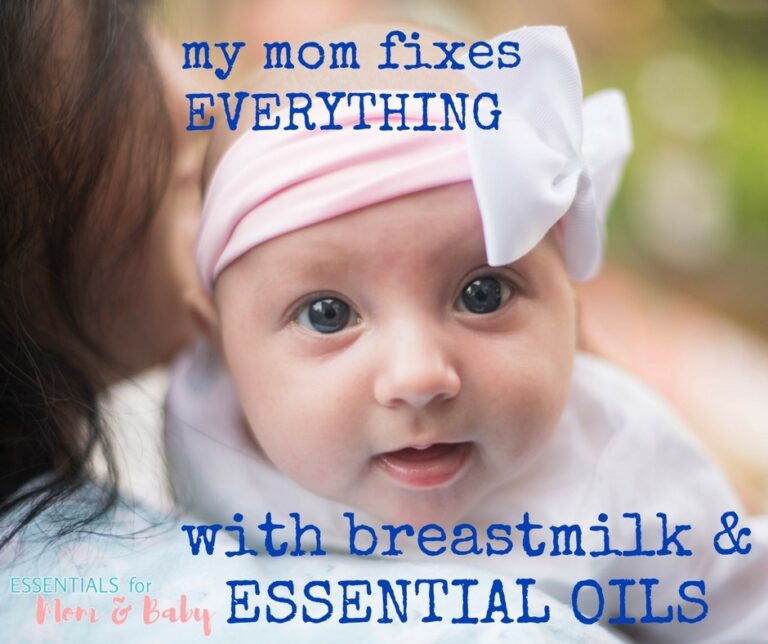
Question #10: What if I get sick?
Do all you can to receive proper amounts of rest, water, and nutrition. If you become sick, continue nursing the same as before. The Womanly Art of Breastfeeding says, “By the time you know you’re sick, you’ve started passing not only the illness but your immunities on to your baby. To stop nursing now would be to deprive her of the best of your immune system when she needs it most. The reverse is truly remarkable. If your baby picks up an illness that you haven’t been exposed to, she passes those germs to you through nursing, and within the breast itself you begin making antibodies and passing them back.”
From this article we read that, “Kissing your baby changes your breast milk. Did you know that the undeniable urge to cover your baby in kisses serves a biological purpose? When a mother kisses her baby, she samples the pathogens on baby’s face, which then travel to mom’s lymphatic system. Mom’s body then creates antibodies to fight those pathogens, which baby receives through breast milk. What?! Amazing, right?”
Question #11: When should I quit breastfeeding?
I encourage all mothers to breastfeed as long as possible. The benefits are plentiful and irreplaceable. There will always be a career waiting for you as well as a million other things but you only get this time with your little one now and though it may not seem like it at the time, they grow so fast. A time-honored way to encourage weaning is “don’t offer, don’t refuse.” Stop offering the breast voluntarily, but don’t refuse if he wants it.
What nobody tells you:
I began breastfeeding when much to my surprise, there was milk everywhere! Nobody told me that when I nursed on one side milk would leak out the other. This is where the Haakaa manual breast pump can come in handy again, catching milk from the breast you’re not nursing on.
Nobody told me that, at any random moment, my milk might let down and I would have two cute wet spots on my shirt. Always wear layers and a jacket can save a lot of embarrassment. Nursing pads inside your nursing bra can do wonders to soak up milk. Be wary of disposable pads that probably contain chemicals. Instead purchase cotton nursing pads that can be washed and reused. Oh, and you’re probably going to leak milk while having sex as well. Just a heads up.
Pretty much no matter what you do, your nipples are going to crack and bleed at some point. Don’t get discouraged. It’s not a sign that you’re necessarily doing anything wrong.
He’s going to bite, hard. He’s not trying to be mean. He just doesn’t know it hurts you. Do your best to teach him that it’s not okay. When he’s teething try nursing in different positions so his new little tooth doesn’t rub you sore.
Breastfeed while laying down on your side. Once I learned how to do that my life became so much easier. Not only does it give your bottom time to heal after birth but it also gives you much needed rest and your arms don’t have to lift your babies weight. Do not feel guilty if you fall asleep. I believe this was divinely designed to give both mom and baby exactly what you both need.
